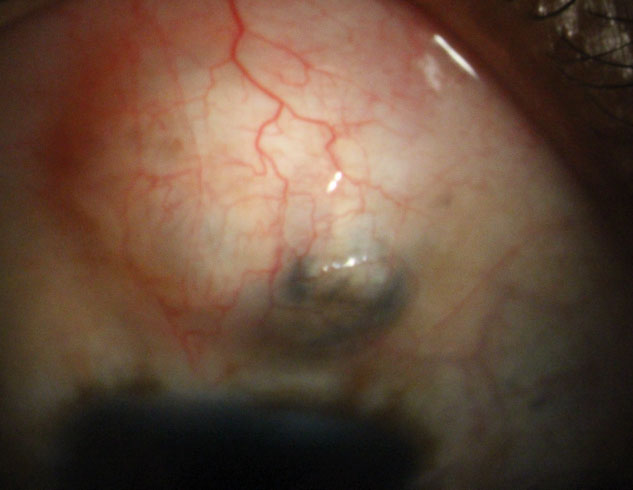 |
|
A higher PRS was also associated with an increased requirement for glaucoma surgery. Photo: Justin Schweitzer, OD. Click image to enlarge. |
Primary open-angle glaucoma (POAG) has a substantial hereditary component, with individuals having up to a ninefold increased risk if they have a first-degree relative with the disease. Creating a polygenic risk score (PRS) by collectively aggregating the effects of common genetic variants has demonstrated—in research settings—the ability to capture much of the POAG heritability. To assess the potential of using genetic data for POAG prediction, researchers developed a PRS that was then applied to four prospective population-based cohort studies to estimate the extent of the increased risk associated with higher POAG PRS values. Their study, which was published in Ophthalmology, demonstrated an exponential increase in POAG risk as genetic predisposition increases. A higher PRS was also associated with an increased requirement for glaucoma surgery.
The researchers developed a PRS using a high-performing and computationally efficient technique for linear regression analysis in gene studies called Lassosum. Their study population included four European-ancestry cohorts: the Nurses' Health Study, Nurses' Health Study 2 and Health Professionals Follow-up Study in the US, and the Rotterdam Study in the Netherlands. The US cohorts included female nurses and male health professionals aged 55 and older. The Rotterdam Study included residents aged 45 or older.
Among 1,046 cases and 38,809 controls, the POAG relative risk (95% confidence interval) for participants with PRS values in the highest 20% (i.e., the upper quintile) was 3.99 in the US cohorts and 4.89 in the Rotterdam Study, compared with participants with median genetic risk (third quintile). The relationship between continuous PRS and POAG risk increased exponentially in the US and Rotterdam cohorts. Combining age, sex, intraocular pressure >25mm Hg and family history resulted in a meta-analyzed concordance of 0.75. Adding the PRS to this model improved the concordance to 0.82. In a meta-analysis of all cohorts, cases in the highest third of PRS values had a larger cup-disc ratio at diagnosis (0.11) and a 2.07-fold increased risk of requiring glaucoma surgery.
“In a two-tier detection strategy where level one screening identifies participants in the top quintile of glaucoma PRS and applies the same hypothetical test to only these subjects, the positive predictive value increases to up to 62% considering the 4.5-fold increase in POAG risk for people in the highest quintile relative to the third quintile of PRS as described in our study,” the researchers wrote in their paper. “This suggests that a PRS encompassing variants across the genome, including those with more modest effects, using Lassosum captures more POAG heritability than the traditional genetic risk scores that consider only the genome-wide significant variants.”
None of this paves the way for PRS use in everyday practice, but the authors expect that “prediction concordance of a POAG PRS, and therefore clinical utility, will increase over time as both the availability of genetic data and the sophistication of statistical and machine learning techniques improve.”
de Vries VA, Hanyuda A, Vergroesen JE, et al. The clinical utility of a glaucoma polygenic risk score in four population-based European-ancestry cohorts. Ophthalmology. August 9, 2024. [Epub ahead of print]. |


